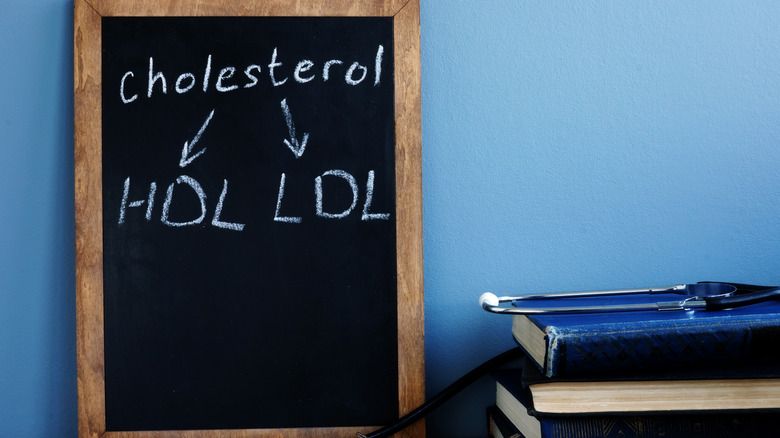What To Expect When You Book A Cholesterol Screening
Cholesterol screening results can provide important clues about your health. As you probably know, high cholesterol is a major risk factor for heart disease. The human body needs this waxy substance to produce hormones, enzymes, and vitamin D, but too much of it can be harmful. Excess cholesterol promotes plaque buildup in your arteries and may lead to coronary artery disease, notes the U.S. Library of Medicine. Plaque buildup, or atherosclerosis, increases the risk of blood clots, strokes, heart attacks, and premature death.
Nearly 40% of Americans have high cholesterol, reports the Centers for Disease Prevention and Control (CDC). Obesity, diabetes, smoking, and poor nutrition all contribute to this condition. A sedentary lifestyle can further affect cholesterol levels, warns the CDC.
Unfortunately, this condition has no symptoms. The only way to measure your cholesterol levels is to get a blood test. As the CDC recommends, most adults should undergo a cholesterol screening, or lipid panel, every four to six years. Individuals who are at risk for high cholesterol and those with heart disease may need to get tested more often.
A lipid panel can predict your risk for heart disease, stroke, and metabolic syndrome
Heart disease causes more than 2,380 deaths per day in the U.S. alone, according to the American Heart Association. The same source reports that about 405 Americans die from stroke each day. Considering these facts, it makes sense to keep your cholesterol levels in check. "A lipid panel is an easy, inexpensive screening blood test that can be very helpful in identifying patients that are at risk for cardiovascular disease," as Dr. Luke Laffin, a preventive cardiologist, told the Cleveland Clinic.
This test can accurately measure your total cholesterol, as well as your HDL (the "good") and LDL (the "bad") cholesterol levels. It also measures triglycerides, a class of lipids found in the bloodstream. High cholesterol, more specifically high LDL (low-density lipoprotein) cholesterol, is a major risk factor for heart disease and stroke. Hypertriglyceridemia, or high triglycerides, can further increase your risk of developing cardiovascular problems. This condition may also contribute to pancreatitis and metabolic syndrome, notes the Cleveland Clinic.
HDL (high-density lipoprotein) cholesterol, on the other hand, may protect against these conditions, says the CDC. That's why health experts recommend eating salmon, tuna, walnuts, olive oil, fish oil, and other foods rich in omega-3s. These fats increase good cholesterol levels while lowering bad cholesterol and triglycerides, explains the American Academy of Family Physicians.
Cholesterol screening is a simple but important test
Cholesterol screening shows the exact levels of total cholesterol, LDL, HDL, and triglycerides so you can take the steps needed to improve them. Total cholesterol, for instance, should not exceed 200 milligrams per deciliter (mg/dL), per the Cleveland Clinic. LDL cholesterol levels should not be higher than 100 mg/dL, while triglycerides should be less than 150 ml/dL. HDL cholesterol levels over 60 ml/dL are considered good. Your doctor will check these numbers and recommend the best course of action. Depending on the results, he may prescribe medications, lifestyle changes, or follow-up tests.
The test itself is minimally invasive and can be performed at any diagnostic lab. Some pharmacies and walk-in clinics offer cholesterol screening services, too. A nurse will take blood from your arm or finger and call you back in a few days. Generally, it's recommended to fast for nine to 12 hours before a cholesterol screening, but this step may not be necessary (via the American Heart Association and Harvard Medical School). Call your doctor or the clinic where your appointment is scheduled and ask about it.
Note that you can also take the test at home. According to the FDA, at-home cholesterol test kits are just as accurate as a traditional cholesterol screening. Simply prick your finger to collect a drop of blood. Depending on the type of test, you may need to send the sample to a lab or put it on a strip of paper that changes color.


